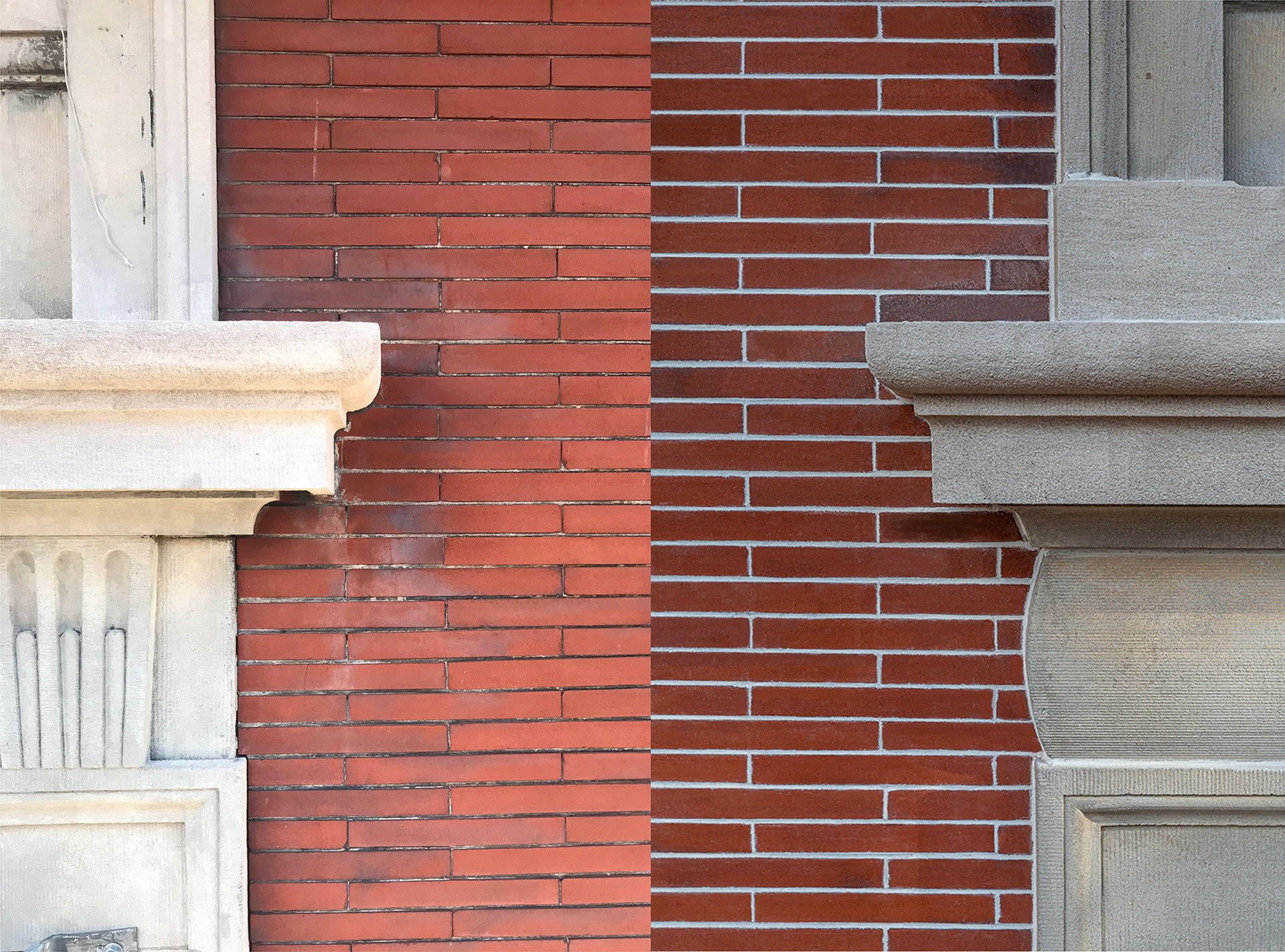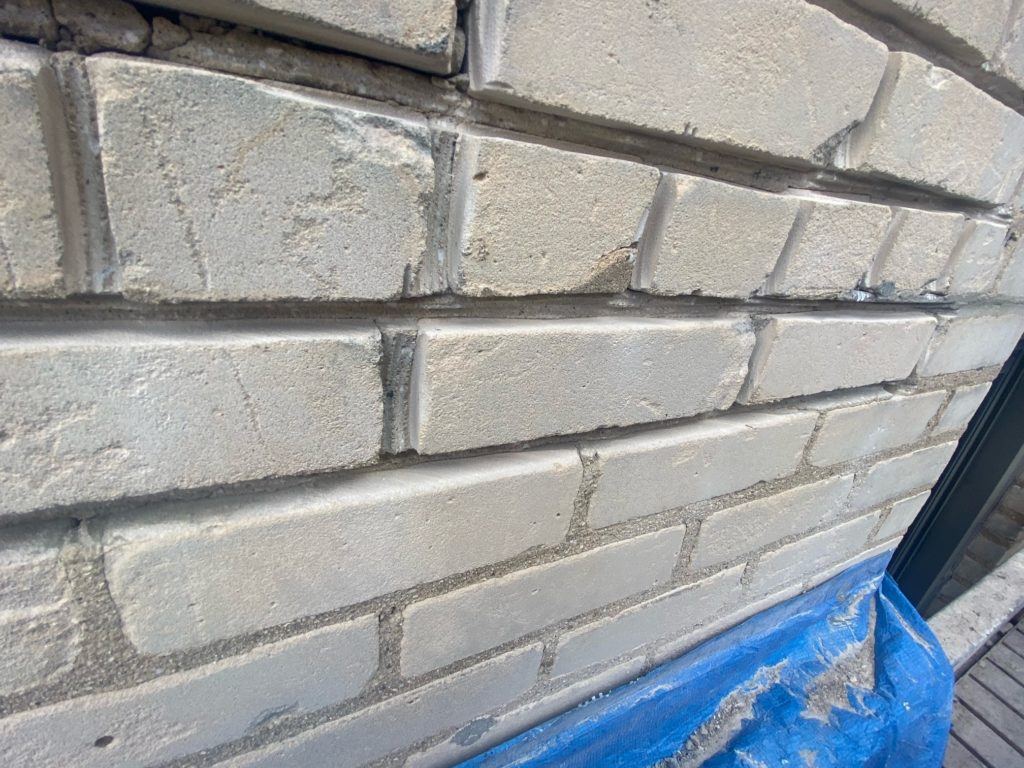One of the most basic repairs an architect can specify is masonry repointing- removing the old mortar joint and adding in new mortar is also one of the most common repairs to be completed incorrectly.
Over time, the mortar that bonds masonry together can begin to deteriorate, often crumbling, receding, or developing deep cracks. At this point, it is necessary to begin repointing, which is most often where the repair can go wrong. While it may sound like a simple task, there are many tricks and techniques to removing the old mortar, which is often skipped or overlooked, resulting in an unsatisfactory job that can leave your masonry wall in even worse condition.
Before beginning repointing, it is essential to identify the root cause of deterioration in your building, which could be anything from a leaking roof or gutter to differential settling of the building. Repointing without a diagnosis of the actual cause will temporarily repair the superficial condition. Still, it could ultimately leave joints in the same deteriorated condition you found them in the first place.
First and foremost, you need to get the correct tools for the job. To properly remove all failing mortar, you will need:
- Hammer and cold chisel
- Grout saw
- Light pneumatic hammer with “finger” chisel
- Angle grinder with a diamond blade
- 5-in-1 Painter’s tool
- Hammer
Now that you have the tools, the mortar removal process can begin!
First, you will cut the mortar joints, use your tools (grout saw or cold chisel) to remove old or broken mortar to sound mortar that is at least 2x the width of the joint deep and no more than 1/3 the depth of the brick masonry. Cutting the joints to a sufficient depth is absolutely critical. The grinder and saw should only remove ½ the width of the joint, down the middle. Then remove the remaining mortar from the bedding surface with hand tools and chisels. Using a grinder and diamond blade is not recommended to remove all the mortar down to the bedding surface, as this can cause great damage to the masonry, and it clogs the masonry pores, reducing the bond of the new mortar. The mortar remaining in the joints must be the proper shape, which is a flat 90° profile parallel to the face of the masonry.
Next, dig out the mortar on the vertical sides using the 5-in-1 painter tool and hammer. Avoid damaging the adjacent brick during this step and level the appropriate profile within the joints. During the mortar removal, a mason should use vacuum protection from cutting dust since silica sand can constitute up to 80% of the mortar, and silica dust is a respiratory hazard. Vacuum the dust out of the joints, then rinse with water. Use a hose and scrub brush to clean the wall of debris. Clean around the places you just scraped to remove debris. Some walls may require substantial changes in this process as water could drive through to the interior.
What Not to Do:
This is a brick masonry wall that was not properly repointed. Some of the issues include:
- None of the joints are cut deeply enough. The mortar must be removed to a depth of at least 2X joint width to prevent “popouts” of the new mortar from being installed.
- The head (vertical) joints have a mortar removed with a curved profile (a 90° profile) at the top and bottom and are not deep enough.
- The remaining mortar at the back of the joint is cracked and debonded from brick and, therefore, not sound mortar to allow for proper bonding of new mortar.
- During removal, brick edges were damaged and cut substantially.
- New mortar extends too far out onto brick arise (corner/edge).
It is important to have the contractor perform a mock-up to be approved by a design professional before the commencement of work and perform regular inspections during the repointing process to ensure skilled, well-trained masons are working on your building consistently with the approved mock-up. While masonry repointing may be a tedious and precise job, Henson’s team members have decades of experience in masonry repairs and can quickly identify whether or not your building is being repointed appropriately.





